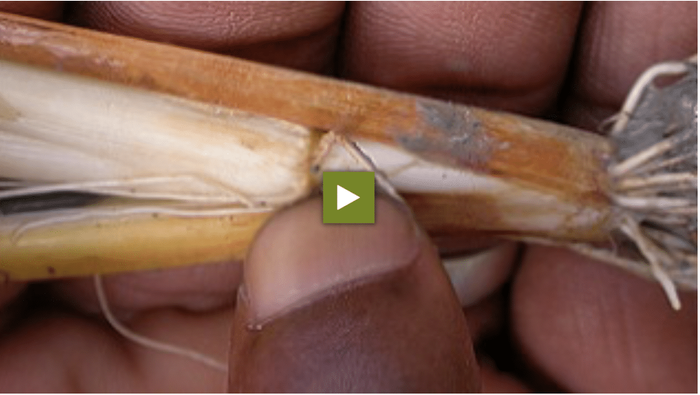With transplanting rice you have more harvest and a better control over weeds. Therefore it makes it easier to manage your crop.
When you broadcast rice, weeds are a big problem. When you transplant rice your yield is going to be two to three times higher. Furthermore you need less seeds, so you are able to pick out only the good seedlings. Rice yields more, when there are more tillers, because every tiller produces panicles. Tillering is affected by the age of the seedlings, the depth of tillering and the distances between plants.
How to transplant
Take good seedlings and make sure to use not to many in your seedbed, because otherwise they are going to be more weak. Seedlings should have about four leaves and should be transplanted about 15 to 20 days after sowing. If your seedlings have only three leaves, you should transplant them less deep. Old seedlings have less tillers and need more time to recover and to start growing again.
Level your field and puddle the soil to make transplanting easier. Leave a thin layer of water a few days before transplanting. The field should be ready to start, when the seedbed is two weeks old. Before uprooting the seedlings you should water them to prevent damages. Transplant fast, so the seedlings don‘t dry out.
Put the white basis of the rice seedlings in the mud and let the green part above the ground. The seedlings will grow slower, when the green part is under the ground. When the roots are to deep, they get to little oxygen, produce less tillers and will die.
Rice seedlings need space to produce tillers. Therefore you should add one to three seedlings per hill. When the panicles start to form, the tillers will stop growing and the canopies should be close. So the rice yields more and has less weeds.
Transplant the rice about 20 centimetres apart. Some farmers use a string every 20 centimetres. You can also mark a stick or use their feeds and hands as a guide. There should be equal distances between the plants. Weeds are easier to manage, when the rice is in lines. When seeds die by transplanting, you should replace them within a week.



















